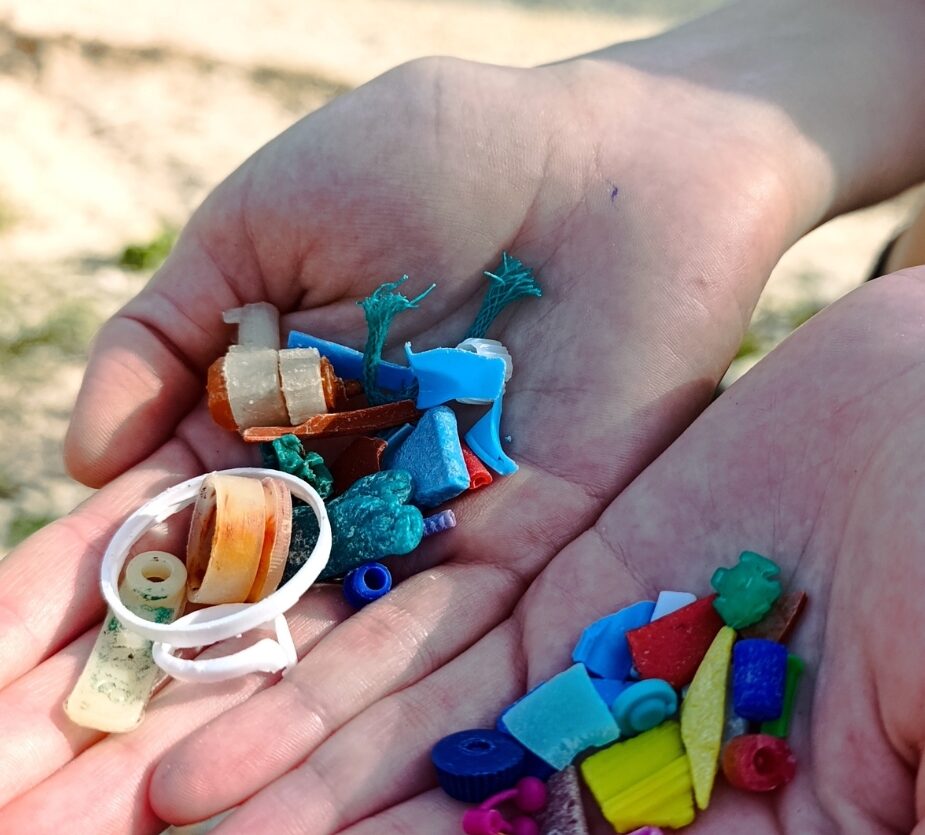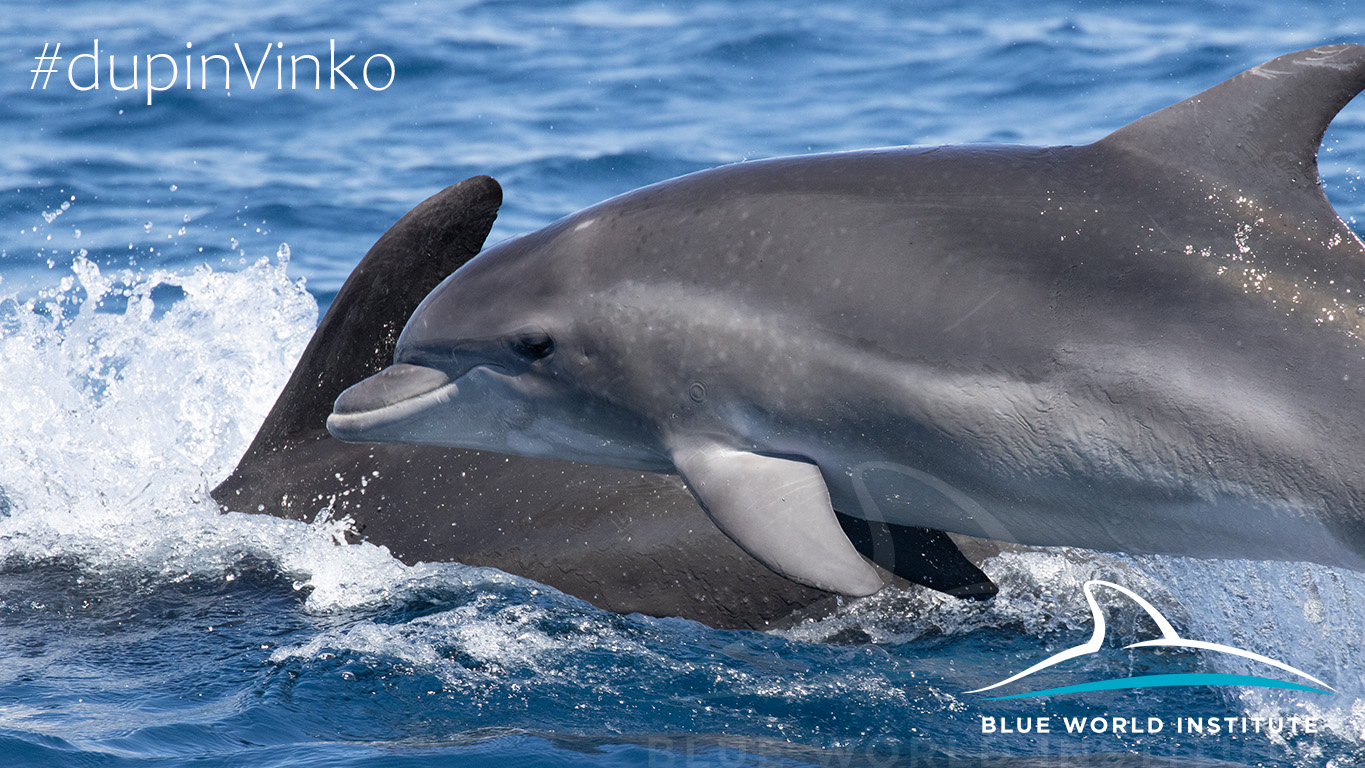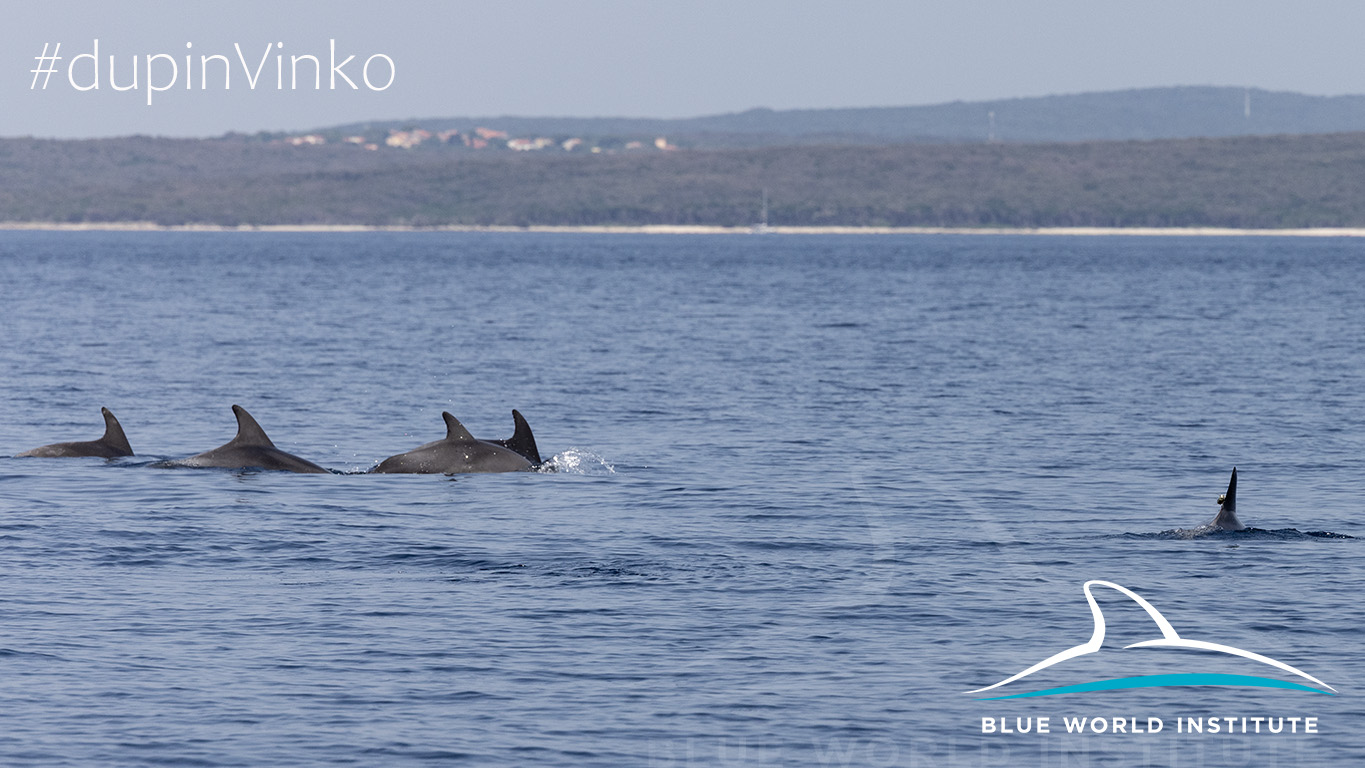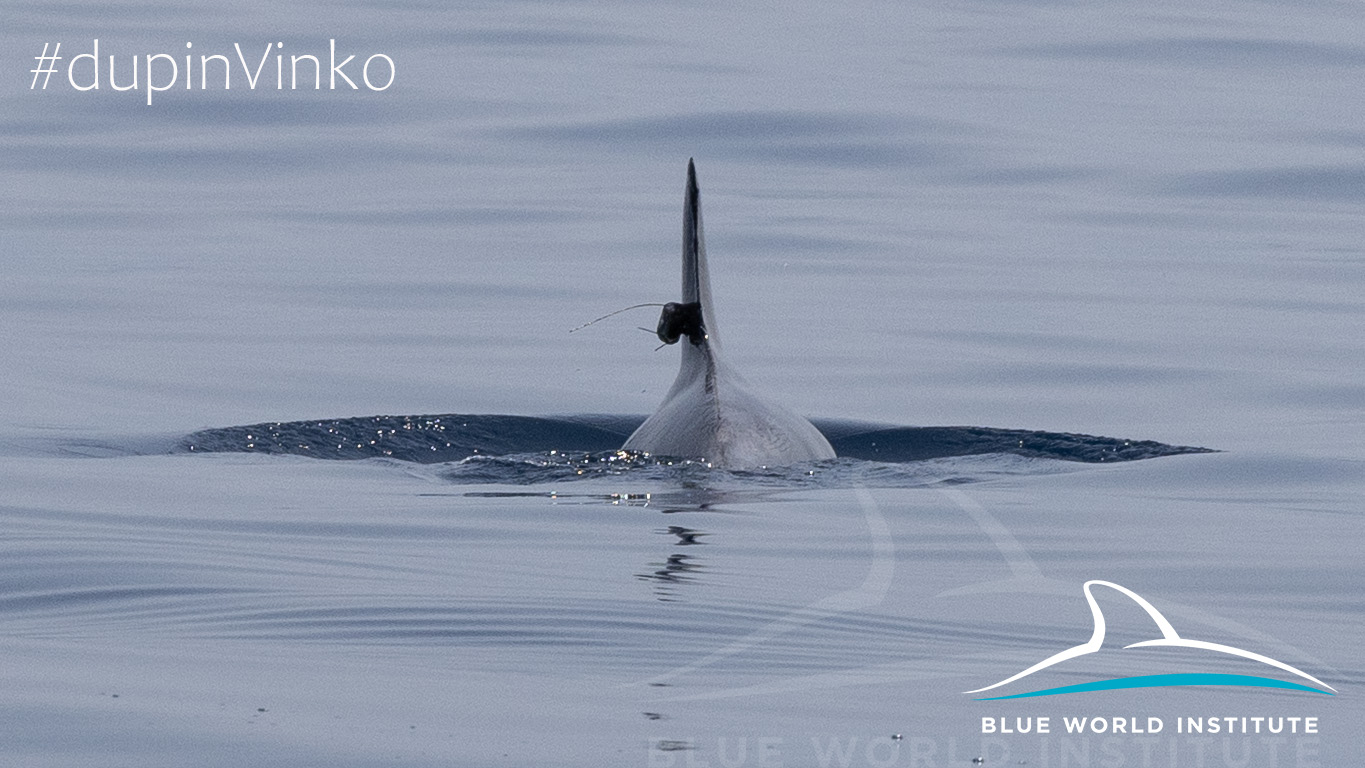
International Coastal Cleanup 2025
This year, with the support of the Ocean Conservancy, the...
19.06.2025
On 15 June 2025, for the first time in the Adriatic Sea, researchers from the Blue World Institute and the Croatian Natural History Museum tagged a bottlenose dolphin with a satellite transmitter. A well-known individual from the Lošinj archipelago, named Vinko, was tagged just a few kilometers from Veli Lošinj.

Vinko with its mom Vinka during observation in 2016.
“Vinko is a male bottlenose dolphin born in 2015 to a female named Vinka. Interestingly, the first time we saw him in 2016, he was already jumping, indicating his lively behavior,” says Jeroen Hofs from the Blue World Institute. Since then, Vinko has been regularly observed in Kvarnerić. He is easily recognized by his dorsal fin, which, after many injuries sustained during play and fights with other dolphins, now resembles a hook on top.

Vinko in a group with other dolphins near Lošinj.
“This time, Vinko was found in a group with seven other bottlenose dolphins (Luca’s20, Matija’s20, L1410 and her calf, L0813’S22, l0709’222, Ana’s21) feeding and socializing near the islet of Oruda. Vinko was quite playful, occasionally jumping and rubbing against a few other dolphins, particularly Luca’s20, a young female he often plays and socializes with,” continues Jeroen.
Shortly after the tag deployment, researchers received the first position signal, confirming the satellite tag was working properly. “We stayed with the group for an hour after tag deployment to monitor Vinko’s behavior and the tag’s position. Although Vinko was a bit reserved towards us after being tagged, he exhibited normal behavior—following the group, socializing with Luca’s20 and swimming slowly northward. We are hopeful that Vinko’s transmitter will continue sending data in the coming days,” said Asst. Prof. Grgur Pleslić, Director of the Science Program at the Blue World Institute.

Vinko tagged with satellite transmitter.
Through its 35 years old research program, the Adriatic Dolphin Project, the Blue World Institute has been monitoring Adriatic dolphins using photo-identification for over three decades. Although this method is efficient for collecting data on individual identification, population size, group composition, and social bonds, it does not provide fine-scale information on habitat use and movement.
To complement decades of data, the Blue World Institute is now launching the first Adriatic study using satellite telemetry on bottlenose dolphins. Asst. Prof. Draško Holcer from the Croatian Natural History Museum, who is leading the study, explains its importance:
“This study will provide the first detailed insights into the movements of bottlenose dolphins within the Adriatic. In addition, we aim to understand the nocturnal behavior of these animals, their individual home ranges, foraging strategies, and possible interactions with fisheries. The results will guide our future research and conservation efforts. Therefore, our study will also continue with the deployment of new satellite tags.”

Bottlenose dolphin Vinko in company of 0709s’20.
To improve our tracking data, we need your help! If you are out at sea in the Kvarnerić area, you may encounter Vinko or other dolphins he is socializing with. If you see dolphins, please send us your photos and videos along with the exact time and location.
Your data can greatly enhance the precision of satellite tracking and add valuable information to Vinko’s movement patterns. You can send your observations via our citizen science app Marine Ranger, www.marine-ranger.org (available for free on the App Store and Google Play), email us at info@blue-world.org, or send us a message on our Facebook page.
Vinko is one of the dolphins already reported through Marine Ranger in May last year, when he was seen near Crikvenica:
👉 Marine Ranger sighting link
Thank you.
A satellite tag is a small transmitter attached to the dorsal fin of a dolphin. It sends various types of data to the Argos satellite system orbiting the Earth. We are using the Low Impact Minimally Percutaneous Electronic Transmitter (LIMPET) satellite transmitting tag. Data transmission occurs when the dolphin’s dorsal fin surfaces above the water. If successful, the satellite receives the data and relays it to a data center where researchers can access it.
To attach the satellite tag, we use a crossbow with a specially adapted arrow that holds the tag in a holding cup. The tag has small titanium pins that penetrate the dorsal fin and hold it in place. Since the dolphin’s dorsal fin is composed mostly of tough connective tissue, the tag causes minimal discomfort.
The tag typically stays attached for 15 to 30 days and then naturally detaches.
Support
This study was made possible thanks to training and long-standing cooperation with researchers from the CIMA Research Foundation, Savona and the Italian Institute for Environmental Protection and Research (ISPRA), Rome, to whom we are very grateful. The satellite tag was deployed under a permit from the Croatian Ministry of Environmental Protection.

This year, with the support of the Ocean Conservancy, the...

During the 2024/2025 school year, in partnership with the Mario...

The loggerhead sea turtle (Caretta caretta) is a cosmopolitan species...

In recent days, the public has been reacting to the...